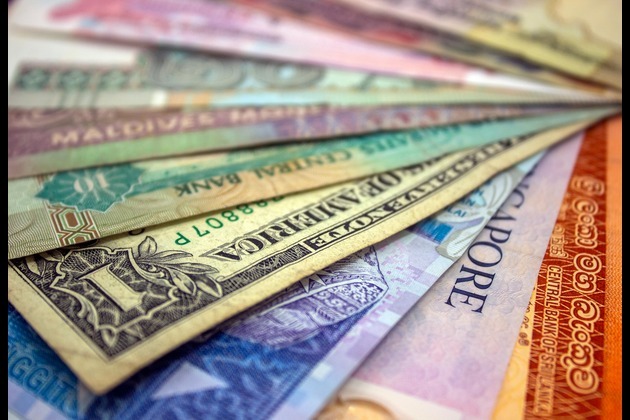What dishes were prepared for traditional Russian weddings
RBTH
25 May 2022, 12:26 GMT+10
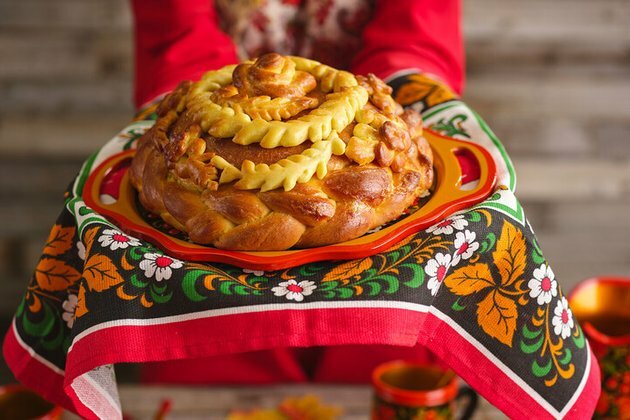
Wedding feasts in Russia lasted from several days up to a week, so the variety of dishes that were presented was a display of wealth of the newlyweds' families and many dishes were meant to bless the marriage with happiness and rich offspring to the future family.
On the first day of the wedding festivities after the ceremony, the newlyweds were treated to a special meal together with their relatives and friends.
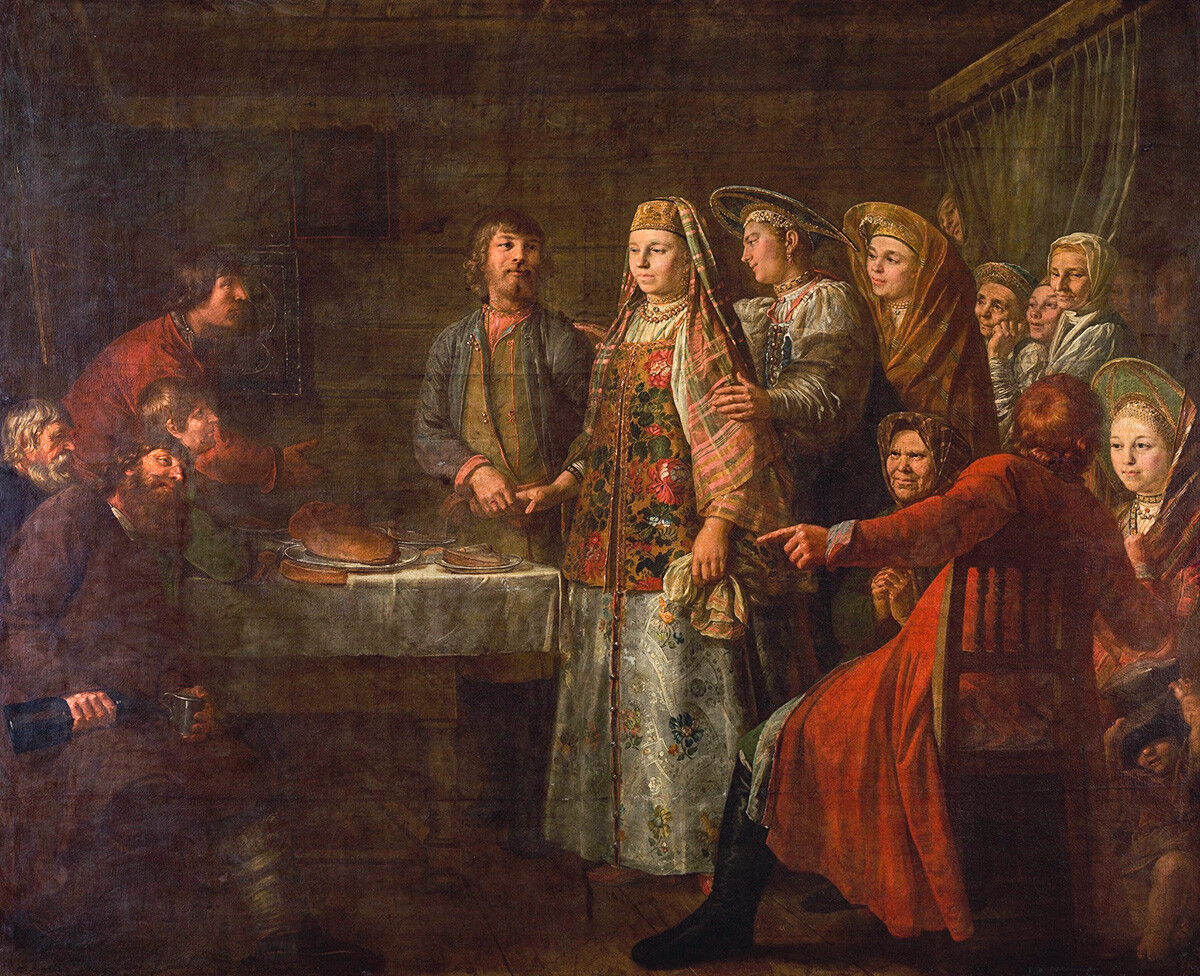
Mikhail Shibanov. Celebration of the wedding treaty. 1777.
Tretyakov Gallery
Russian ethnographer Ivan Golyshev described a wedding in Vladimir Region, which is situated not far from Moscow: "All relatives of both husband and wife are invited. The guests are met at the entrance by the father, the mother and the newlyweds. The bride's father bows at the feet of the newlyweds' couplers and hands them a loaf of black bread. Before dinner starts, three glasses of vodka, liquor, red wine or honey are brought out at once - something for everyone to drink". (Bogoyavlenskaya Sloboda of Mstera, Vladimir Province, Vyaznikovsky District, 1863).
Ham, lamb's head and jelly were prepared as cold appetizers. According to Golyshev, goose offal stew was served as a soup. Of course, the choice of dishes strongly depended on the area where the newlyweds lived. In other regions, for example, housewives could prepare cabbage soup, noodles in meat broth or borsch.
The richer the family, the more meat on the table
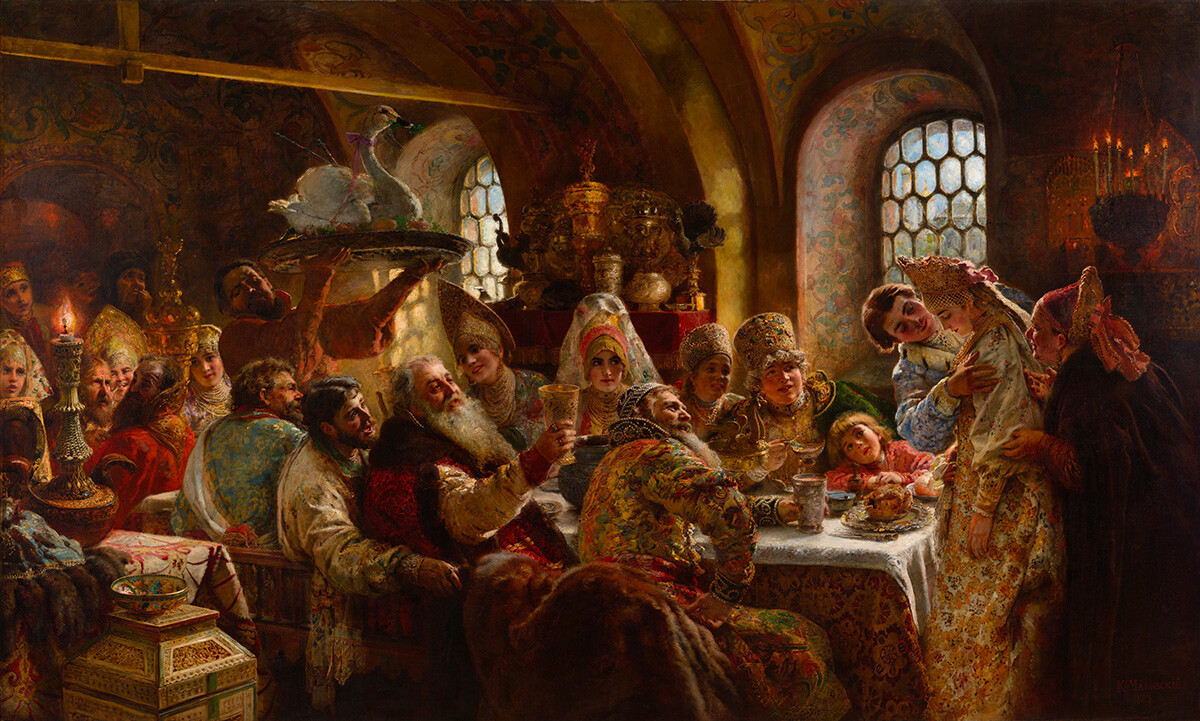
Boyarsky Wedding Feast. 1883.
Hillwood Museum, Washington, USA
According to Golyshev, millet porridge with various parts of ram, piglet, and goose was served for the main (hot) course. It was believed that the more meat and fish on the table, the richer the celebration was. A piglet would often be slaughtered before the wedding started and all kinds of dishes were prepared from it.
"When the middle part of a ram is served, a newlywed takes a kidney from it, cuts it into small pieces and hands it out on a fork to everyone present. When a goose is served, the newlyweds leave the table to change their clothes", writes the ethnographer.
While the guests ate, the newlyweds did not touch any food or drink. They could symbolically have something small to eat so as not to go hungry. In northwest Russia, young people were given fish pie and milk with cranberries, "so may there be many children, like fish in a river, but they were strong - blood with milk".
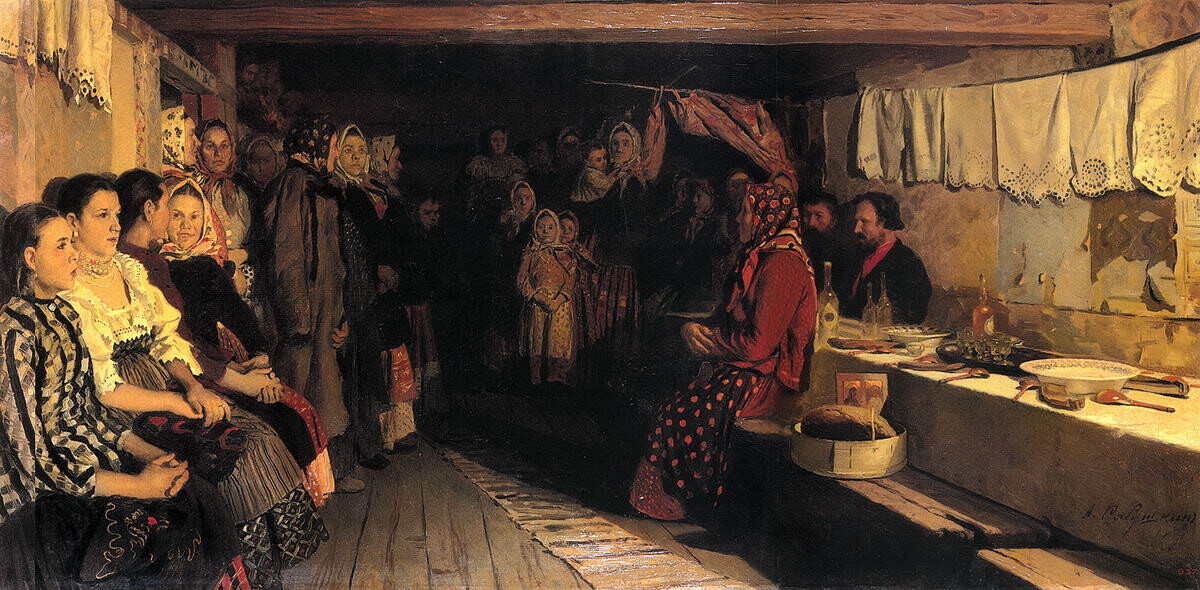
Andrei Ryabushkin. Waiting for the newlyweds to be crowned in Novgorod Province, 1891.
Russian Museum
Russian ethnographer Mikhail Zabylin describes another interesting tradition in the book 'Russian people. Its customs, rituals, legends, superstitions and poetry' (1880): "A table covered with three tablecloths was placed in front of the newlyweds. One tablecloth on top of the other. On them, salt in a salt shaker and a kalach (donut-shaped white bread) or perepechi (tart) with cottage cheese were placed. When the guests were served the third course, which was a swan, a fried chicken was placed in front of the married couple. Then, the groom's best man takes the fried chicken, wraps it in the second of three tablecloths and brings it to the newlyweds.
The second day of the wedding took place in the groom's house with song and dance. And, on the third day, the newly married wife demonstrated her culinary skills by baking pies for her guests.
Karavai - the most beautiful wedding bread

The round shape of karavai symbolizes the sun, a sign of fertility and prosperity.
Legion Media
A former Russian tradition was to greet newlyweds after the wedding ceremony at the entrance of the parental home with bread and salt. This bread - karavai - was baked in a round shape for weddings, and was decorated with braids, flowers and swans made of dough. The round shape symbolized the sun, a sign of fertility and prosperity. It was believed that a karavai should be baked by a woman who enjoys family life and has healthy children, so that the forming of the new family would be as prosperous as the marriage of the karavai's baker.
READ MORE: Why wedding 'karavai' can't be bought in the store, but only baked at home
Each element of decor on the karavai has a special meaning: rings symbolized marriage, spikelets stood for fertility and prosperity, doves or swans represented fidelity, flowers expressed femininity and the viburnum epitomized love.
The karavai was primarily intended for the newlyweds. They would bite off a piece at the entrance of the house. However, during the celebration, all guests shared the joy of the celebration by tasting a piece of the karavai, as well.
A pie in the form of a prince's hat
A kurnik, a closed, layered pie with a filling and a hole in the top, was also considered a ceremonial wedding cake for a long time. It was baked in the form of a quadruple- or octahedral hat, reminiscent of the luxurious hat of Russian Grand Prince Vladimir Monomakh, who ruled in the 11th century.
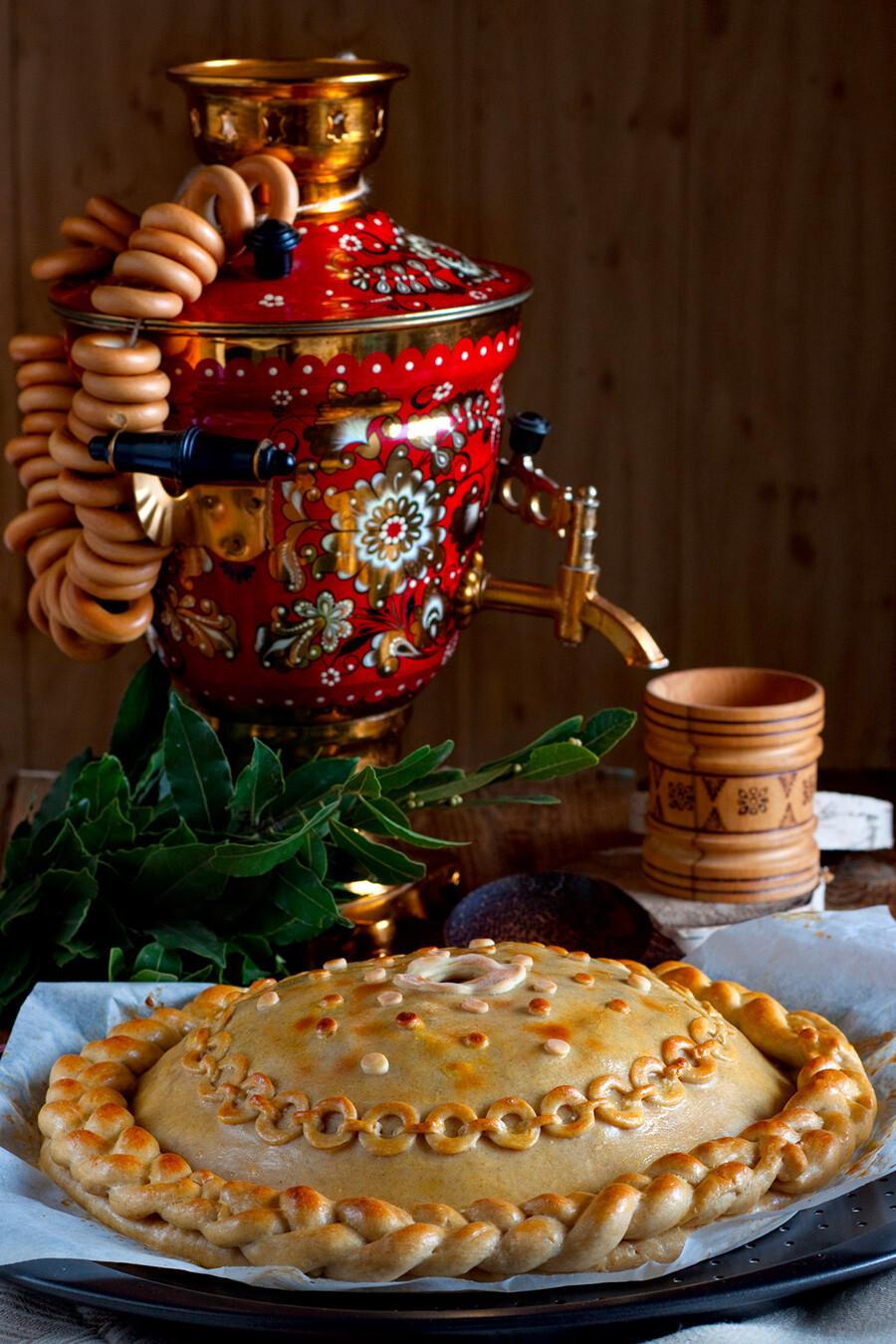
Kurnik, the honored guest at any Russian wedding.
Legion Media
The kurnik was made with a chicken and wheat-grain filling. The chicken or rooster stood for a strong offspring. The wheat symbolized wealth and fertility. Sometimes, shells or chicken bones were put in the kurnik for good luck. In case the wedding was organized by a poor family who couldn't afford to buy chicken, cheaper fillings, such as millet, mushrooms, root crops or cabbage were used for the kurnik. It was a custom to bake two kurniks - one for the bride and one for the groom. The bride's pie was decorated with flowers and birds, a sign of femininity and beauty. The groom's pie was decorated with figures of people and animals, a symbol for a large family and prosperity.
It is said that, in some parts of Russia, it was a custom to break a kurnik above the heads of the bride and groom during the wedding feast. It was believed that the more wheat grains that fell on the heads of the newlyweds, the richer their lives would be.
Next to large pies, there was also a variety of small and open pies on the wedding table, each with different fillings. They were handed out during the feast instead of bread. Sweet pies and gingerbread were baked for dessert.
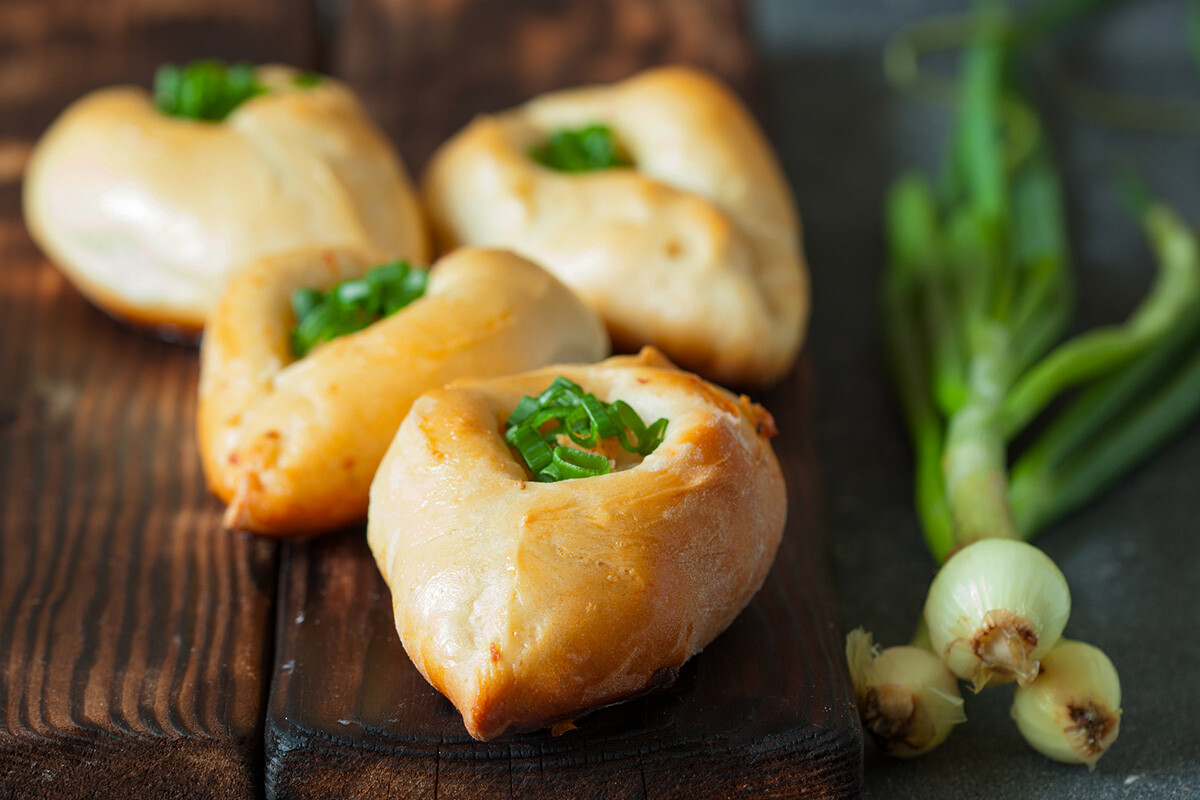
Rasstegai, popular appetizer on a Russian table.
Legion Media
After the October Revolution in 1917, the socialist authorities became hostile towards the church. Religious ceremonies became something of the past in both large cities and villages and many wedding rituals were forgotten. Baking a karavai with salt for newlyweds is one of the rare gastronomic traditions that have survived to this day.
READ MORE: 5 unusual vareniki recipes from "Miss Vareniki" herself
Dear readers,
Our website and social media accounts are under threat of being restricted or banned, due to the current circumstances. So, to keep up with our latest content, simply do the following:
- Subscribe to our Telegram channels: Russia Beyond and The Russian Kitchen
- Subscribe to our weekly email newsletter
- Enable push notifications on our website
- Install a VPN service on your computer and/or phone to have access to our website, even if it is blocked in your country
 Share
Share
 Tweet
Tweet
 Share
Share
 Flip
Flip
 Email
Email
Watch latest videos
Subscribe and Follow
Get a daily dose of Mediterranean Times news through our daily email, its complimentary and keeps you fully up to date with world and business news as well.
News RELEASES
Publish news of your business, community or sports group, personnel appointments, major event and more by submitting a news release to Mediterranean Times.
More InformationEurope
SectionEarly heatwave grips Europe, leaving 8 dead and nations on alert
LONDON, U.K.: An unrelenting heatwave sweeping across Europe has pushed early summer temperatures to historic highs, triggering deadly...
Ireland’s Deputy PM calls for swift US-Ireland trade agreement
DUBLIN, Ireland: Tánaiste Simon Harris has called on the United States to use every hour to reach a zero-for-zero tariff agreement...
Dublin Bus accused of disability discrimination by blind passenger
DUBLIN, Ireland: A blind woman from Dublin says she was hurt while getting off a bus because the driver refused to pull in close to...
Nurses in Ireland sound alarm over growing hospital overcrowding
DUBLIN, Ireland: The Irish Nurses and Midwives Organisation (INMO) has warned that there could be a serious trolley crisis this summer...
Turkey, France battle wildfires amid early Europe heatwave
ISTANBUL/PARIS/BRUSSELS: As searing temperatures blanket much of Europe, wildfires are erupting and evacuation orders are being issued...
Greenback slides amid tax bill fears, trade deal uncertainty
NEW YORK CITY, New York: The U.S. dollar continues to lose ground, weighed down by growing concerns over Washington's fiscal outlook...
International
SectionTragedy in Spain: Diogo Jota and his brother die in car accident
MADRID, Spain: Liverpool footballer Diogo Jota and his younger brother, André Silva, have died in a car accident in Spain. Spanish...
Early heatwave grips Europe, leaving 8 dead and nations on alert
LONDON, U.K.: An unrelenting heatwave sweeping across Europe has pushed early summer temperatures to historic highs, triggering deadly...
U.S. military, China, Russia in Space race
President Donald Trump's plans to build a space-based Golden Dome missile defense shield have drawn immediate criticism from China,...
Trump wins $16 million settlement from Paramount over CBS Harris edit
NEW YORK CITY, New York: Paramount has agreed to pay US$16 million to settle a lawsuit brought by U.S. President Donald Trump over...
British PM faces major party revolt over welfare reforms
LONDON, U.K.: British Prime Minister Keir Starmer won a vote in Parliament this week to move ahead with changes to the country's welfare...
White House meeting between Trump, Netanyahu on July 7
WASHINGTON, D.C.: President Donald Trump will meet Israeli Prime Minister Benjamin Netanyahu at the White House on Monday. President...






